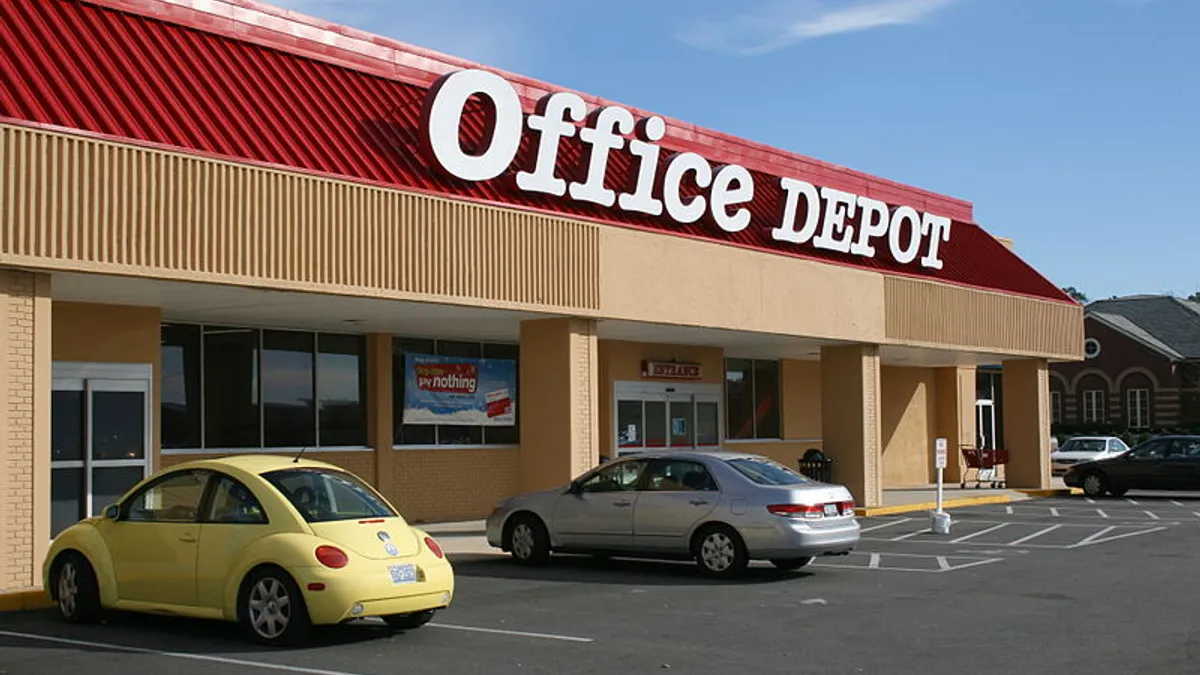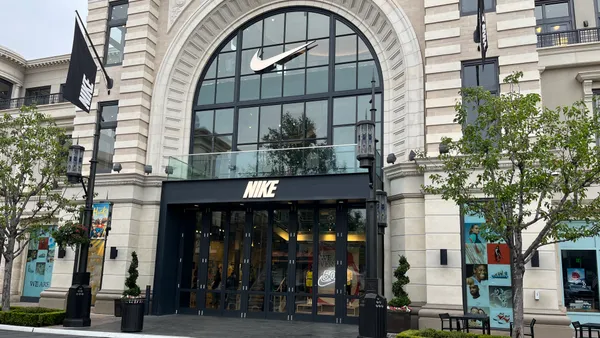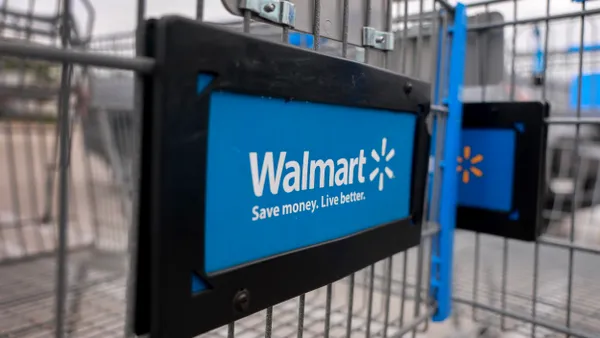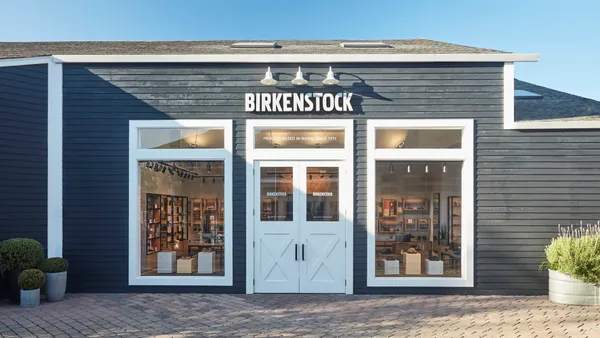Dive Brief:
- Office Depot announced Wednesday second quarter profit of $210 million, up from a loss of $58 million in the same period a year ago.
- Office Depot completed the first phase of a U.S. retail store optimization initiative launched in 2014 during the quarter, resulting in the closure of 400 stores, and is now expanding the plan, targeting approximately 300 additional stores over the next three years.
- The office supply retailer reported adjusted second quarter earnings of 3 cents per share, below the FactSet consensus of 6 cents, which excluded non-recurring items like a $250 million fee collected from termination of its ill-fated merger with rival Staples. Revenue was $3.22 billion, down 6% from $3.4 billion in the same quarter last year, but ahead of the FactSet consensus of $3.20 billion.
Dive Insight:
Office Depot CEO Roland Smith vowed “bold new action” in the wake of its failed merger with Staples.The company hired consultancy Bain & Co. to finalize a comprehensive strategic review of its business, with an emphasis on analyzing its operating model, growth opportunities and cost structure.
The review process is now substantially complete, Office Depot said Wednesday, touting a three-year strategic plan comprising four major elements: Accelerating opportunities in the contract channel; optimizing and reinventing its North American retail model; implementing multi-year, companywide cost reductions; and returning capital to shareholders.
Office Depot said it has identified significant opportunities in the facilities space, and pledged to offer an expanded assortment of products while leveraging its supply chain capabilities and increasing its selling efforts to boost penetration.
The retailer additionally said it will expand trials of new, smaller-format stores boasting curated product assortments and expanded customer services. Office Depot is planning to open 24 of the 15,000-square-foot stores by the end of this year, with an additional 100 stores planned for 2017, and noted that many elements will be incorporated across its entire retail portfolio in the years ahead, promising a more consistent and efficient operating model along with enhanced sales per square foot.
This is all well and good, but Office Depot still has not fully addressed its biggest challenges—namely, increased competition from other segments of the retail sector, and the growing threat posed by e-commerce, in particular Amazon.
Office Depot’s North American sales continue to erode, falling 7% to $1.2 billion in the second quarter of 2016 from $1.3 billion in the prior-year period due to the impact of planned store closures. In addition, same-store sales declined 1% as a result of sluggish store traffic, and Office Depot’s business solutions segment (which ships office supplies under contract to business customers) suffered a 7% sales decline.
There’s really “no other place besides Office Depot and Staples to get everything you need for your office," Scott Wagner, a partner at law firm Bilzin Sumberg and an antitrust expert, told Retail Dive earlier this year. "But everything you can get there, you can get somewhere else.”
As for web competition, Forrester Research principal analyst Andy Hoar predicts that the B2B e-commerce market as a whole will swell to $1.13 trillion by 2020, more than twice the size of online B2C. Hoar anticipates B2B e-commerce will grow larger in the decade ahead, potentially representing 25% of all U.S. B2B transactions in 2025 and possibly as much as 40% by 2030. Forrester data indicates that 63% of B2B buyers already research half or more of their work purchases online, and 53% say they will make half or more of their purchases online by 2018.
But they’re not going to Office Depot: Instead, 92% of B2B buyers told Forrester they’ve used Amazon to research a purchase for work, and 82% of B2B buyers have used Amazon to buy for work.
Investors have shown little confidence in Office Depot’s abilities to overcome these obstacles. Shares are down 42% year to date, The Street reports, although shares rose 3.4% to $3.40 in premarket trading Wednesday.













